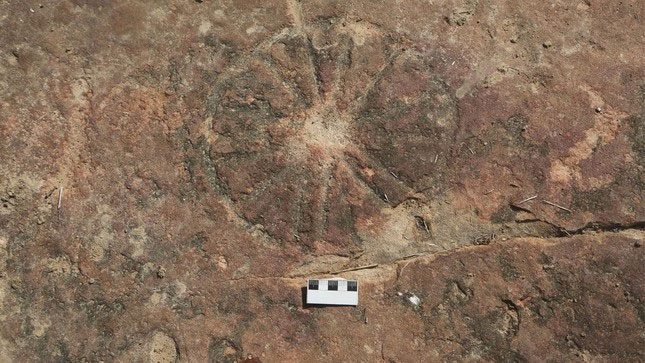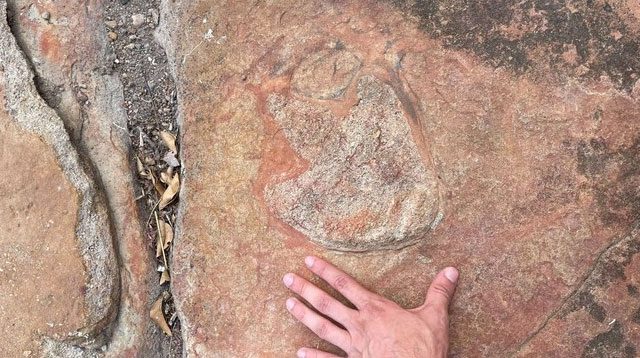A new study reveals that 9,400 years ago, hunter-gatherers in what is now Brazil created dozens of stunning rock art designs alongside fossilized dinosaur footprints.

Rock engravings discovered at an archaeological site in Brazil. (Photo: Leonardo Troiano)
Researchers described the rock engravings and dinosaur footprints dating back to the Cretaceous period (145 million to 66 million years ago) in a study recently published in the journal Scientific Reports. They suggest that ancient humans intentionally placed their rock art next to dinosaur footprints, as many of the engravings are located just 5 to 10 cm away from the fossilized prints.
The lead author of the study, Leonardo Troiano, an archaeologist from the National Institute of Historical and Artistic Heritage of Brazil, stated: “The individuals who created the rock engravings had a profound awareness of the footprints, likely choosing their exact locations.”
This archaeological site is known as Serrote do Letreiro (Portuguese for “Signpost Hill”), located about 11 km from the urban center of Sousa in the northeastern state of Paraíba. It is near the Dinosaur Valley, a reserve famous for its hundreds of fossilized dinosaur footprints.
Researchers have been aware of fossilized dinosaur footprints in this area since the early 20th century, but the rock art there has only been briefly mentioned in recent years, according to the new study. Troiano noted that while there was knowledge of at least one ancient engraving by the Kiriri people, the main indigenous group in northeastern Brazil, the proximity of the rock engravings to the dinosaur tracks had never been recorded.
Dinosaur Footprints from Various Species

Dinosaur footprints.
Troiano and his colleagues conducted the study with a group of high school students who visited the site in 2023. In addition to learning about paleontology and archaeology, the students also took photographs for field research.
This site features dinosaur footprints from various species, including theropod dinosaurs, lizard-hipped dinosaurs, and bird-hipped dinosaurs.
The research team noted that the traces of various dinosaur types, such as carnivorous theropods, long-necked sauropods, and bipedal bird-like dinosaurs, including iguanodontian dinosaurs.
The study authors suggested that the similarity between dinosaur footprints and those of the Rhea Americana, the largest living bird in Brazil, may have helped ancient humans recognize and interpret these fossilized remains more easily.
The rock engravings, largely consisting of circular carvings filled with lines and other geometric patterns, are believed to have been created by humans living in the area from about 9,400 to 2,620 years ago. Troiano remarked: “They were small groups of hunter-gatherers living in society and using stone objects.”
Researchers did not find any organic remains that could assist in radiocarbon dating; thus, they compared this artwork with archaeological sites in the area featuring similar or identical rock art.
For instance, the rock engravings at sites like Pedra do Alexandre, located about 200 km west of Serrote do Letreiro, date back approximately 9,400 years based on radiocarbon analyses of human burial sites.
The researchers found that ancient humans created the newly described carvings using two techniques: pecking and scratching.
Troiano explained: “Pecking involves using a type of stone hammer to create indentations on the surface, while scratching requires rubbing a stone on the surface until it forms the desired design. In some cases, both techniques were combined to enhance visibility and depth.”


















































